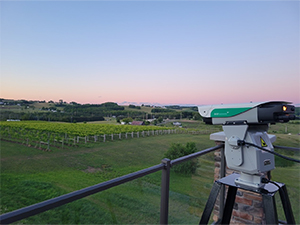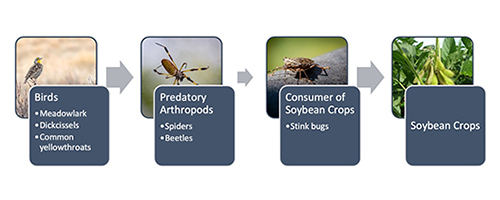The Variety of Ways Birds Damage Crops
Mar 14, 2023
There is a rich history of agriculture in the midwestern states. With low lands and rolling hills, there is perfect land for growing a variety of crops. In addition to the diverse crop lands, there is also a diverse ecosystem that lives amongst the people and thrives on food that is provided in some of these crops. Two crops that are grown in the Midwest are soybeans and wheat. Birds affect the yield of both crops but not always in the most traditional ways. With that food source being readily available, planning for the crop season and the yield loss due to birds is an important step to take with Wild Goose Chase by your side every step of the way.
Soybeans
- Top 5 States that produce Soybeans (USDA 2021)
- Illinois: 672.6 million bushels
- Iowa: 621.9 million bushels
- Minnesota: 356.3 million bushels
- Nebraska: 350.9 million bushels
- Indiana: 335.6 million bushels
Soybeans are a large part of the crops planted in the Midwest with the top 5 producers all being midwestern states. With high yields being produced, there is a lot at stake when it comes to crop damage. In most cases, damage being caused is directly associated with the birds. In soybeans the birds cause damage through the food chain. This occurs when the birds eat the natural predator (spiders and predatory beetles) of other arthropods that eat soybeans. In a study reviewed by the American Ornithological Society, it was shown that when birds were excluded but arthropods had access, the yield of the soybean crops increased compared to areas where birds were not excluded. In a diet assessment the 22% of birds were shown to have consumed the natural predator of the pests. These spiders or beetles would have normally eaten the pests which would have led to less damage in the soybean crops.

Chart showing how the food chain affects the crop yield in soybeans. Size of arrow correlates with amount of pressure from the prior consumer. More pressure on the spiders and beetles will lead to more pressure on the soybean crops.
Wheat
Avian impacts on wheat differs from their impact on soybean crops. Wheat crops in the midwest are also a staple with Minnesota and Illinois in the top 10 producers in the United States. These states produced over 48 million bushels in 2021 according to the USDA. When managing bird problems in wheat crops, the biggest mistake that farmers can make is waiting until damage becomes obvious. By this time it is likely too late in the season to break any established habits and regain any yield lost. Once a food source is established in early spring, birds will continue to visit your site and also teach their young fledglings where the food is. Birds like the Red Winged Blackbird and the European Starling affect wheat crops by directly eating the crops. They do this at almost every stage of wheat growth, but it may not always be the same culprit depending on growth stage. Wild Goose Chase can help you with the crucial task of ensuring that the right practices are being used for the right species.
What Wild Goose Chase Can Do For Your Crops
Wild Goose Chase uses a variety of techniques to rid your property of pest birds. The key to managing damage on the property is making sure the birds don’t get used to the practices implemented. Using High Intensity Lasers like the AVIS Mark II is a great way to deter birds from the property and has been shown to eliminate 70% of crop loss. This automated laser can be set to different power and randomness to keep birds on their toes. Minimizing the predictability of the scaring device makes it difficult for the birds to become acclimated, therefore rendering the practice useless. Timing is key when managing damage. Breaking patterns is much more difficult than preventing the patterns in the first place. Call Wild Goose Chase today for more information and to see how we can help you in the spring planting season!




 0
0
